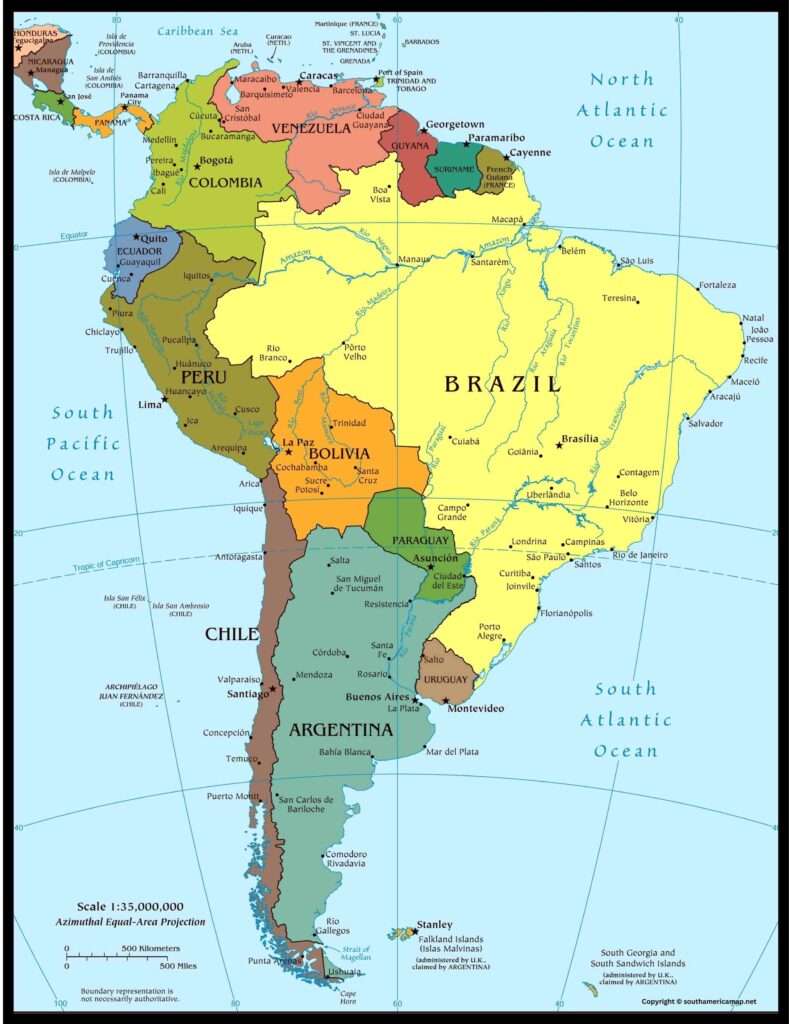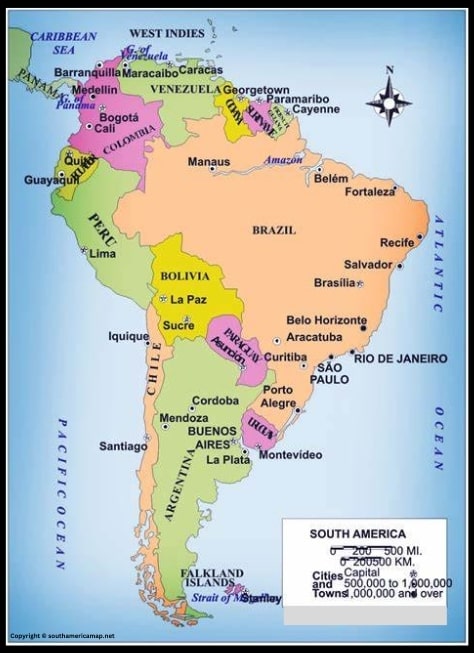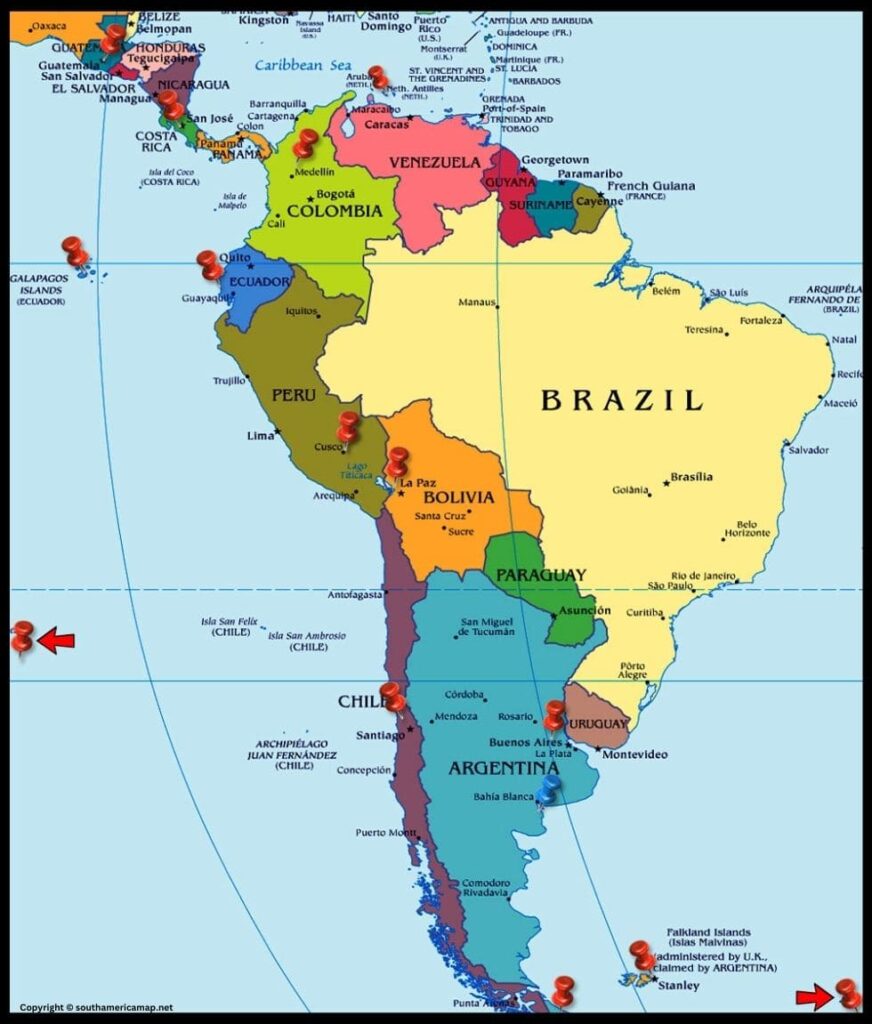A political map of South America is very valuable in understanding the political situation of the continent and its consequences. It presents a picture representation of national borders, capitals, cities, administrative areas and other political units, which provides references for many benefits for many purposes.
Related Post –
South America Political Map
- Learning political geography: A political map enables students and people to see the political boundaries of South American countries, their relative size and positions and their capitals. This information creates a better understanding of the political makeup of the continent.
- Learning political history: From political maps, people can learn about previous events such as colonial expansion, border struggle and field changes. This information helps to make a better understanding of the current political mobility in South America.
- Political trend analysis: Political maps can help analyze political trends and development on the continent. For example, students can investigate the spread of political parties, election patterns and areas of political unrest.
- Navigation and Orientation: A political map enables passengers to navigate unknown areas, find places of interest in target countries, and know the political situation in places that are visiting one.
- Crossing Country Borders: Crossing the border across the country, tourists can effectively organize their visits and inform about visa requirements or prohibitions.
- Local customs and laws to understand: A political map can help explain the understanding of local customs and laws in various countries of South America, leading to respectable functions and cultural sensitivity.
Political Map for South America with Countries
- Market analysis and expansion: Political maps can be employed by businesses to discover potential markets of some countries, compare the places of competitors and develop their expansion strategies effectively.
- Legal and regulatory understanding: With the study of political boundaries and administrative divisions, businesses can develop an understanding of legal and regulatory environment of various fields following local laws.
- Increasing business and economic cooperation: Political maps help companies understand business system, economic alliances and South American trade blocks, encouraging cooperation and economic possibilities.
- Increasing political participation: Political maps can be used to inform their voting districts, voting rights and citizens of political leaders. This helps to enable people to actively engage in political process.
- Tracking political changes: Analysis of political maps and political border changes, may remain updated about recent political events and developments on an continent.
- Imagination of global relations: Political maps help in understanding global relations between South American countries, such as alliances, diplomatic relations and potential struggle areas.
Central And South America Political Map
South America is a continent that has a rich cultural diversity, history, and varied geography. It consists of twelve countries, each of its kind, that are of political and geographical importance.
The largest nation of South America, Brazil, is not just famous for its extensive Amazon Rainforest but also for its thriving cities, the capital Brasília among them. Another leading country, Argentina, features a blend of Latin American and European cultures and is famous for its cultural contributions, especially of music and dance.
Chile, which moves along the banks of the Pacific, is defined by its breathtaking natural beauty, including the Andes Mountains and the Atacama Desert. Colombia, which is limited by the Caribbean Sea and the Pacific Ocean, has long gone beyond issues in recent years and has emerged as a warm and welcome destination.
Venezuela, with immense oil reserves, has seen political and economic conflict in recent years, both affect its population and energy sector worldwide.
Peru is rich in the history of ancient civilizations, with the classification of its world famous Machu Pichu and various ecosystems. Ecuador, located along the equator, is famous for the separate Galapagos Islands with its biodiversity.
Landlocked Bolivia claims La Paz and the high -altitude capital city of the constitutional capital Sukre, which has a mixture of indigenous and colonial effects. Located in the interior of South America, Paraguay, Gwani is famous for culture and Paraguay River.
Small countries like Uruguay, with their advanced social policies and amazing beaches, and Guyana, an English -speaking nation, with a mixture of Caribbean and South American influences, combines in overall fabrics in South America.
Suriname is famous for its diversity, and the French Guyana of the Foreign Department of France, shows even more nuances in the diversity of the region. Each of these political institutions contribute to the complex and dynamic political situation of South America with their related challenges and opportunities.


